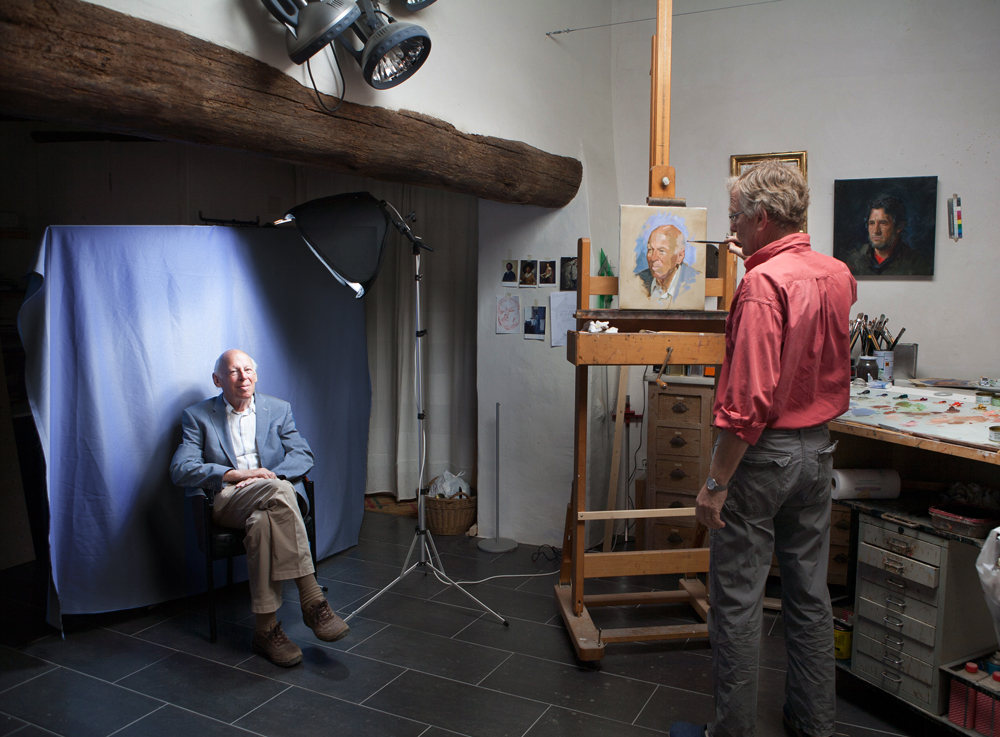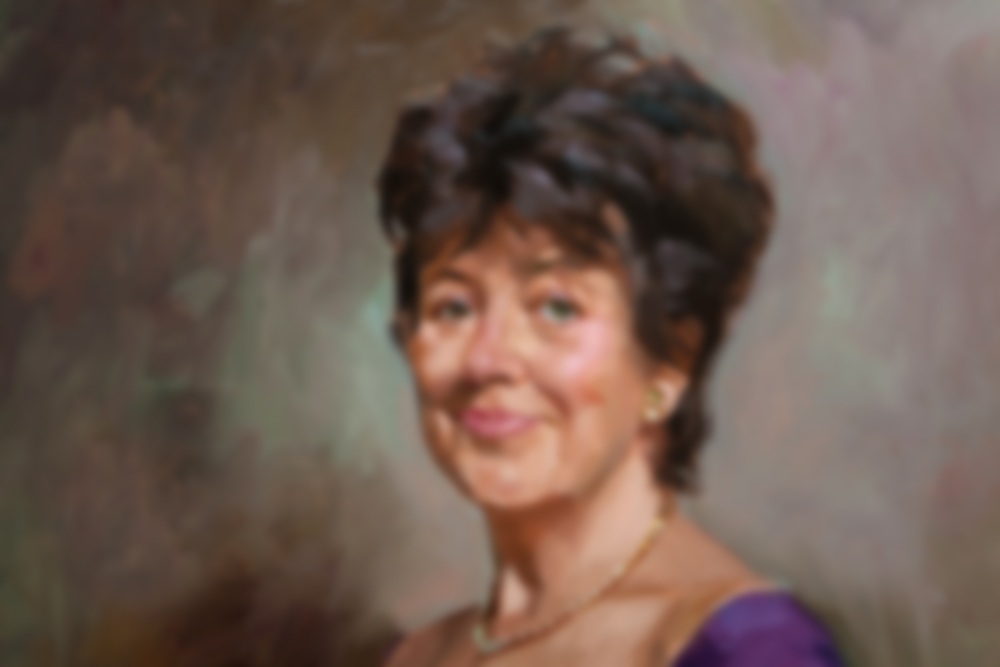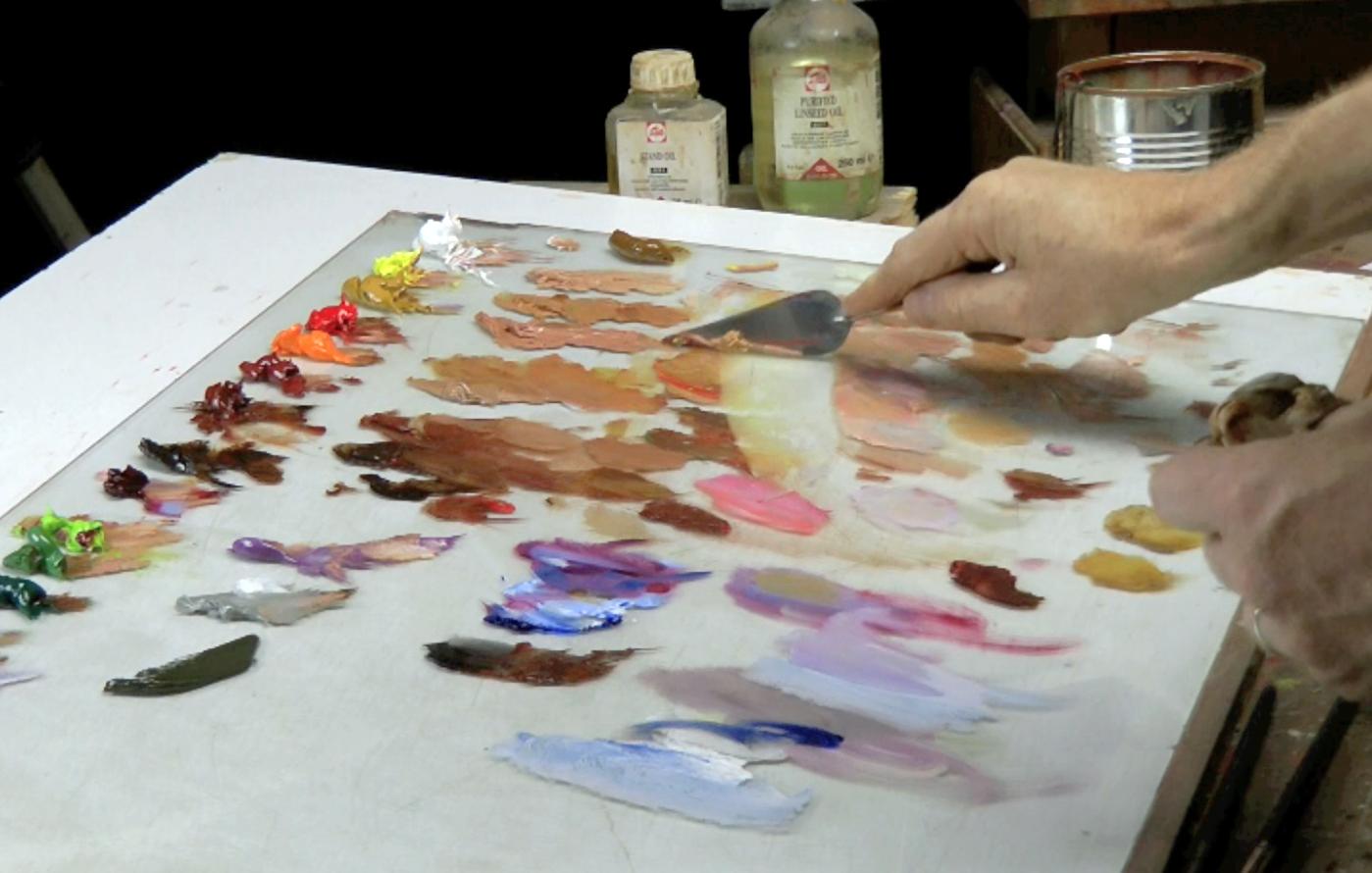
These days I am reading the book “Man with a Blue Scarf” by Martin Gayford. It is on sitting for a portrait by Lucian Freud. Good books can take possession of your mind for days. It’s like when you spend some time in a boat and you are accustomed to the constant wobbling. Once on shore you find yourself still waddling. You must readjust. Yesterday and today I have been painting the portrait of the man in the picture above and the spirit of Lucian Freud is present at the sessions. His quotes are constantly itching in my mind.
Such as: “The longer you look at an object, the more abstract it becomes, and, ironically, the more real”.
Or: ” I paint people not because of what they are like, not exactly in spite of what they are like, but how they happen to be.
And “I would wish my portraits to be of the people, not like them. Not having a look of the sitter, being them”.
Time and again, I have to clear my mind because these lingering thoughts intervene. I must concentrate on my job, the sitter and me.




